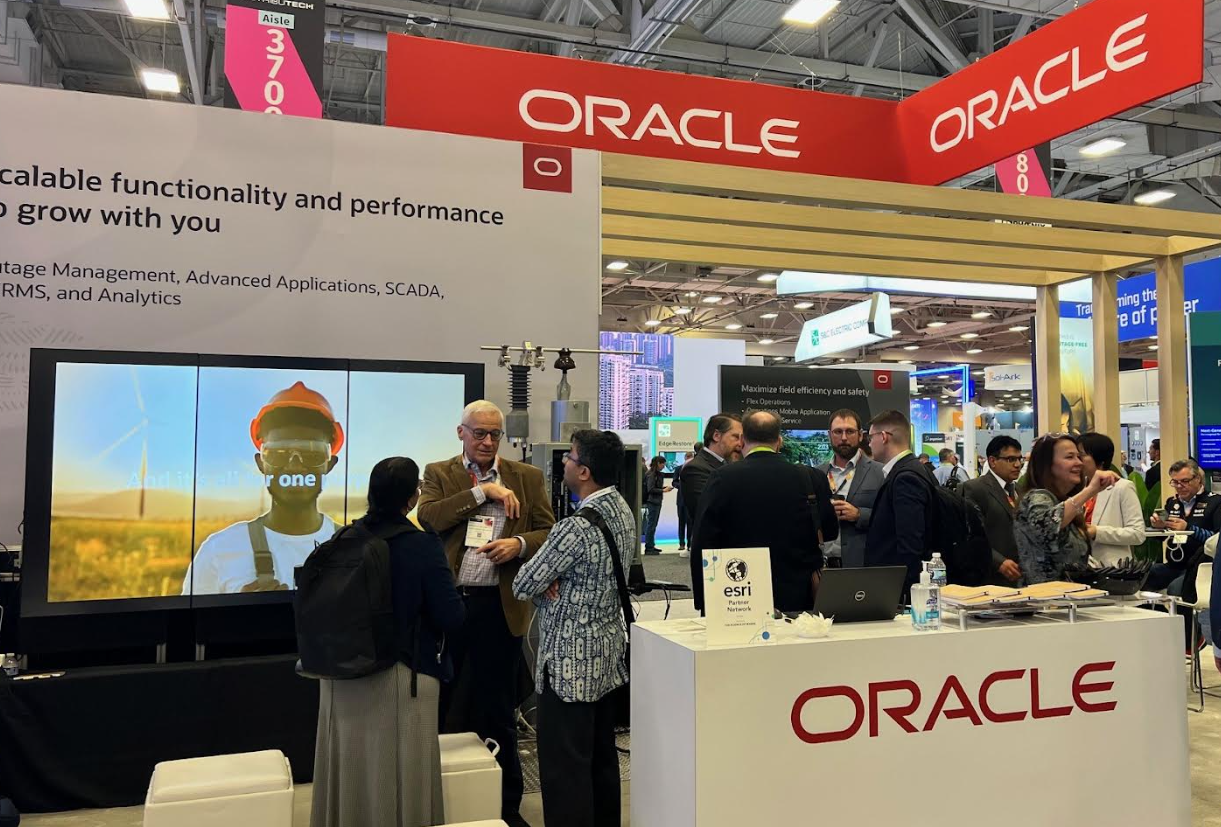The energy transition is as much a digital transformation as it is a physical one. That was one of the biggest takeaways at this year’s DistribuTECH conference.
As utilities navigate the challenges of electrification, renewable integration, and grid resilience, data has become their most valuable asset. The energy transition isn’t just about new infrastructure—it’s about unlocking the full potential of data.
For years, utilities relied on on-premises systems and siloed data to operate their networks. Today, that model is giving way to cloud computing, AI analytics, and real-time grid insights. The shift isn’t just about keeping up with industry trends—it’s a necessity. A decade ago, utilities hesitated to adopt cloud solutions. Today, it’s no longer a question of if but when—and how fast they can transition.
Energy Central sat down with Tom Eyford, Global Industry Specialist of Utility Operations at Oracle, and Brad Harkavy, VP of Grid Product Strategy at Oracle, to understand the full scope of the industry’s digital transformation.
Transforming the Grid with Cloud and AI
As utilities embrace digital solutions, Eyford and Harkavy noted that one of the biggest advancements in recent years has been the adoption of Advanced Distribution Management Systems (ADMS), which provide utilities with unprecedented visibility and control. By leveraging artificial intelligence (AI) in tandem with ADMS, utilities can move from reactive decision-making to predictive and proactive grid management.
“We’re seeing that customers that are showing up really focused on outages first,” Harkavy said. “Part of that is in response to external events like storms and wildfires, but we’re also seeing customers that never really cared about outages before, because they were in stable weather environments, are now focusing on outages too, because they see unstable energy production.”
Those challenges create opportunities for advanced tools that can offer:
- Enhanced outage management, with predictive insights that can help reduce restoration times.
- Optimized load forecasting, providing greater grid stability as more distributed energy resources (DERs) come online.
- Improved asset management, shifting from age-based replacements to condition-based maintenance, and leveraging the condition assessments in operational decision-making, both for operators as well as system-generated actions.
But: Interoperability of these new digital tools is critical. Oracle’s grid solutions are designed to bridge legacy systems with modern platforms, reducing friction in the transition process. “We’ve designed these tools to fill in gaps, readily integrate, as well as set the stage for future growth and modernization,” said Eyford. “We’re not here to tell you to rip out three good systems just to integrate new capabilities. So clean integration is key.”
The Role of Partnerships in Utilities
A common misstep for utilities? Failing to recognize the forest (opportunities created by new software and tech) through the trees (problems and needs that arise in their own businesses). Enter: strategic partnerships. “What we’ll typically do is first try to understand the kind of business needs and where they’re at currently. What kind of regulatory pressure are they under? We’re here to identify what the gaps really are, and sometimes we end up identifying that the real problem isn’t the one that the utilities brought us in for,” Eyford said.
But successful partnerships require careful scoping and planning. In particular, Harkavy highlighted the need to set expectations. “Our job is to make sure we don’t oversell our customers beyond what we collectively identify in the discovery process.”
As the energy landscape continues to evolve, Eyford and Harkavy noted that the utility workers are more adaptive to new technology than ever before. But with that comes some caution from new places: the boards and executives making these key decisions.
“I don’t think that the resistance is so much the worker in the bucket truck because they are tech savvy already,” said Harkavy. “The resistance is at the operational level. They’re looking at broader issues like those presented by data privacy and security in the AI context.” So? Oracle is incorporating remote working and situational awareness on top of these digital tools, offering data-driven solutions coupled with enterprise-grade privacy and security.
Looking Ahead
The future of energy is more than adding renewables and upgrading infrastructure—it’s about harnessing the power of data. With AI, cloud computing, and advanced analytics focused on grid solutions, utilities can increase reliability, harness greater value from DERs, improve reliability, and address regulatory demands more efficiently.
In five years, Eyford and Harkavy envision a grid with more DERs, more aggregation tools, and more complexity. Managing that grid will not be just the role of the utility, but numerous focused providers and tools will arise to fill the gaps and manage that complexity. “Everyone’s going to have their little niche,” Eyford said, “and what’s going to happen is utilities are going to seek out partners to help make sense of it all. That’s where we see a team like Oracle coming in, to help them deal with the dozens of vendors and massive amounts of data that are quickly becoming necessary to manage and secure the grid.”
All week, Energy Central is publishing our series of conversations from DistribuTECH 2025. You can see them all as they go live at this landing page.
Other published interviews:










